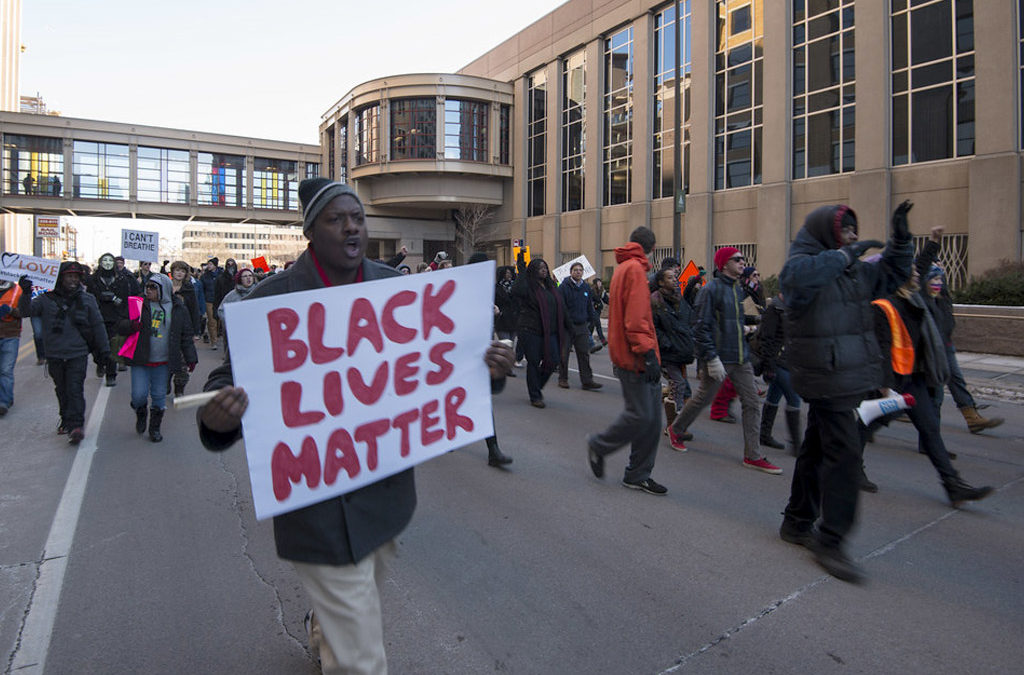Emmanuel Cannady
“Daddy changed the world.” – Gianna Floyd
In those words, George Floyd’s six-year-old daughter succinctly captured the global significance of her father’s tragic murder. Together with the outrage of Breonna Taylor and Amaud Arbery’s murders, the killing of Floyd triggered protests around the world demanding greater police accountability and the eradication of structural racism and white supremacy for good. Protesters marched in the streets, lock-step and in unison, and again proclaimed “Black Lives Matter!”
Throughout the summer of 2020, the Black Lives Matter Movement captured public consciousness on a level not seen since the Civil Rights Movement of the 1950s and 1960s. Currently, it is common to see people hanging “Black Lives Matter” signs in their home windows, churches changing their marquees to match the movement, and businesses crafting anti-racist statements. Though momentum favors the current movement, all movements are difficult to sustain. Therefore, in this essay, I will discuss the Black Lives Matter Movement’s sustainability strategies. Specifically, I will address how the movement sustains interracial unity, the utility of persistent media visibility, and how protest tactics help build political power.
From veteran Black activists to White novices in conversations about systemic racism, many agree that this movement feels different from past movements in recent history. What some pundits call the “great awakening,” the current Black Lives Matter Movement is creating a collective consciousness about structural racism. This shift creates a space for White allies to participate and marks a stark contrast to Black Lives Matter opponents’ zero-sum, identity-politics framing of the movement. The main target of activism is the structure of white supremacy rather than White people themselves. This new paradigm suggests that Black gains do not equal White losses and that structural racism constrains everyone. Therefore, Black Lives Matter is a people’s movement centered on collective liberation. Because Black bodies are the most affected by structural racism, dismantling systems that disproportionately harm Black people is the path to a collective liberation where everyone has a stake.
Media visibility is an important tactic for the Black Lives Matter Movement. Activists leverage traditional and social media to expose the violence perpetuated by state authority structures. The goal of this is to expose the broken social contract between citizens and the institutional structures assigned to protect them, mainly the police. Before the ubiquity of cell phones and social media, people rarely viewed recorded state violence. Current technology can provide the public with immediate footage of police brutality. Cell phones act as countersurveillance and accountability tools that have been successful in revealing the inhumanity of the U.S. carceral state. Twitter users started using the hashtag #BlueFall to track police violence cases from across the world. Keeping momentum requires the public and activists to continue surveilling police encounters as an accountability measure. The constant availability of footage will help sustain the movement as we seek to suppress officer-involved shootings and prevent militarized police from assaulting protestors.
In addition to disruptive tactics, activists and organizations within the Black Lives Matter Movement are working to achieve policy changes, including police accountability bills, defunding the police campaigns, and greater resource allocations for traditionally divested communities. Sustaining the Movement requires attention on multiple fronts which means there are numerous ways people can contribute to and sustain the Movement. Some people can attend municipal meetings, draft bills, write grants, apply pressure on local politicians, or provide clerical assistance to activists. Others may choose to help protesters by serving as legal observers and medics, or by raising or donating money for bail funds. Numerous, simultaneous tactics with adequate aid are necessary to help build political power.
The lack of sustainability threatens all social movements and the current Black Lives Matter Movement is no exception. Activists and activist organizations are sustaining the movement by carving a space for collective liberation, using technology to maintain visibility, and realizing the multiple different ways protesters can participate. The Black Lives Matter Movement is not an identity-based movement, because liberating Black people is the vehicle through which all people are liberated. Through a collective, concerted effort to sustain the Black Lives Matter Movement, we can give life to Gianna Floyd’s belief that her daddy changed the world.
Emmanuel Cannady is a Ph.D. candidate in the sociology doctoral program at the University of Notre Dame who researches race and social movements. He is a co-founder of Black Lives Matter-South Bend, which is an official chapter of the Black Lives Matter Global Network.




